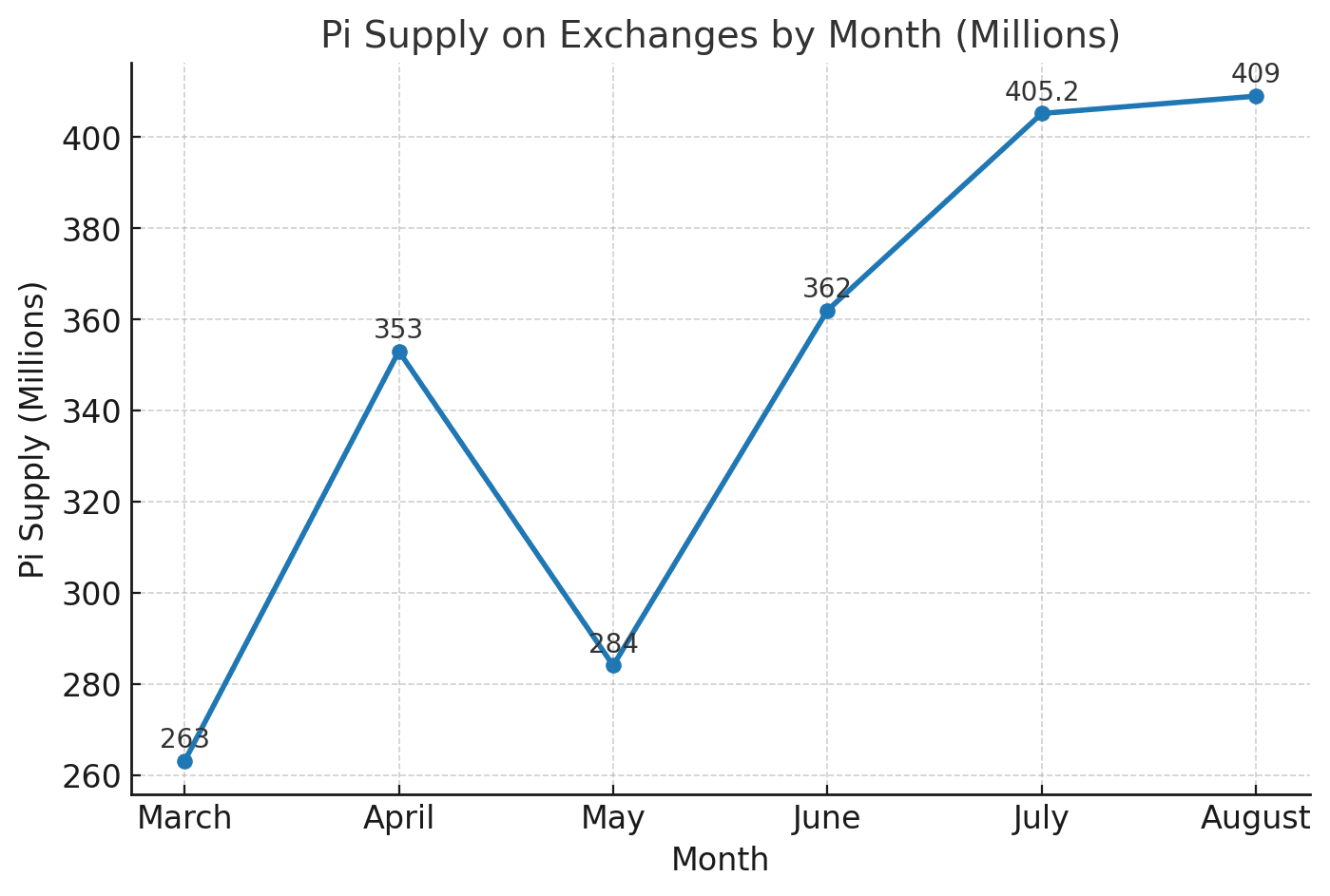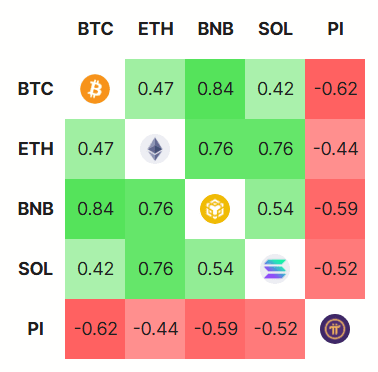Despite the strong growth trend in the crypto market, the performance of Pi Network remains quite lackluster. While many coins are continuously reaching new highs, Pi Coin (PI) hit a record low earlier this month, indicating a significant drop in investor confidence.
Despite having an ambitious community model with over 60 million users, recent data shows that interest in Pi Network is gradually cooling. This raises concerns among observers about the project's ability to sustain and grow in the long term.
Pi Network: 3 Warning Signs for Investors
1. Pi Supply on Exchanges Hits Record High
In the second week of August, data from PiScan recorded more than 409 million Pi Coins being held on centralized exchanges – the highest ever. A strong influx of tokens into exchanges often signals that selling pressure will soon increase, as many investors want to take advantage of liquidity or cut losses.
The situation is even more serious as Pi Coin is still being unlocked daily. In the next 30 days, Pi Network will release an additional 166.5 million tokens, continuing to put pressure on the market supply. It is no surprise that the price of Pi Coin has dropped 36.4% in the past 60 days, becoming the coin with the steepest decline in the entire market.

2. Declining Interest from Individual Investors
Google Trends data shows that the search volume for 'Pi Network' has sharply decreased, falling far behind the keyword 'Altcoin'. This is a notable reversal, especially since Pi Network previously dominated search rankings and had an absolute advantage in online visibility.

3. Pi Network Goes Against Market Trends
The initial excitement surrounding the mobile mining model and the anticipation of the Pi Network's open network launch seems to have subsided. As the altcoin season approaches, other alternative coins are attracting more attention, causing Pi to gradually lose its advantage in the race for community interest.
Data from DeFiLlama shows that while Bitcoin, Ethereum, and Solana maintain a high positive correlation – rising in price when market sentiment is positive – Pi Network exhibits a negative correlation. In other words, the price of Pi Coin is moving against the overall upward trend, clearly reflecting a divergence from the growing optimism in the market.

Adding to the tension are the controversies surrounding the Global Consensus Value (GCV) of Pi Coin. A well-known pioneer under the pseudonym Mr. Spock argues that the community's valuation has created unrealistic expectations. According to him, many holders possess only a few Pi coins but believe they are 'rich', thereby unwilling to buy more even when the price is just $0.4. They even assert that tokens on exchanges are not 'real Pi', despite the network having entered the open phase and completed identity verification (KYB).
The combination of factors – from increased selling pressure, declining interest, price movements against the market, to internal controversies – presents a rather bleak picture for Pi Network. Without strong steps to restore investor confidence, Pi's path ahead will be full of challenges.




